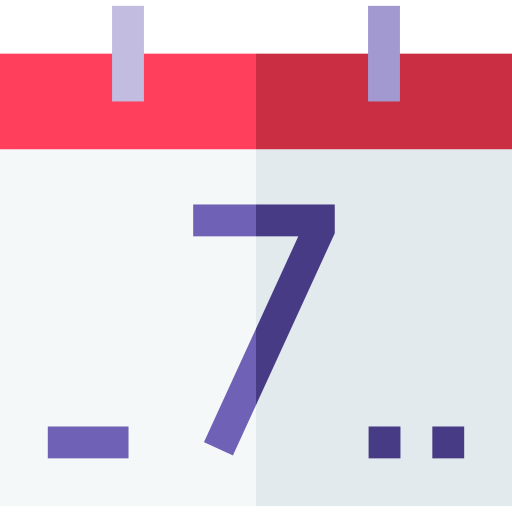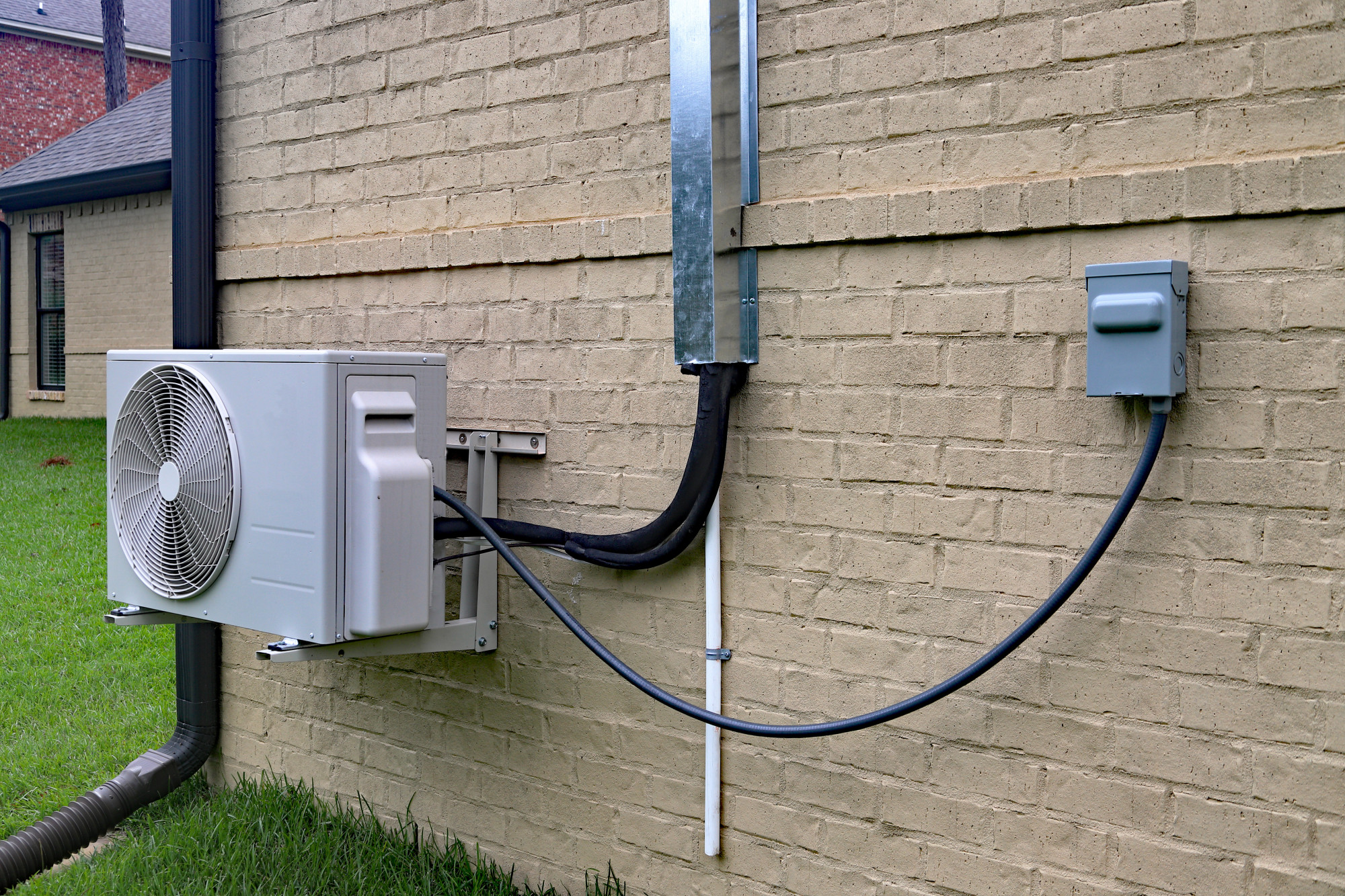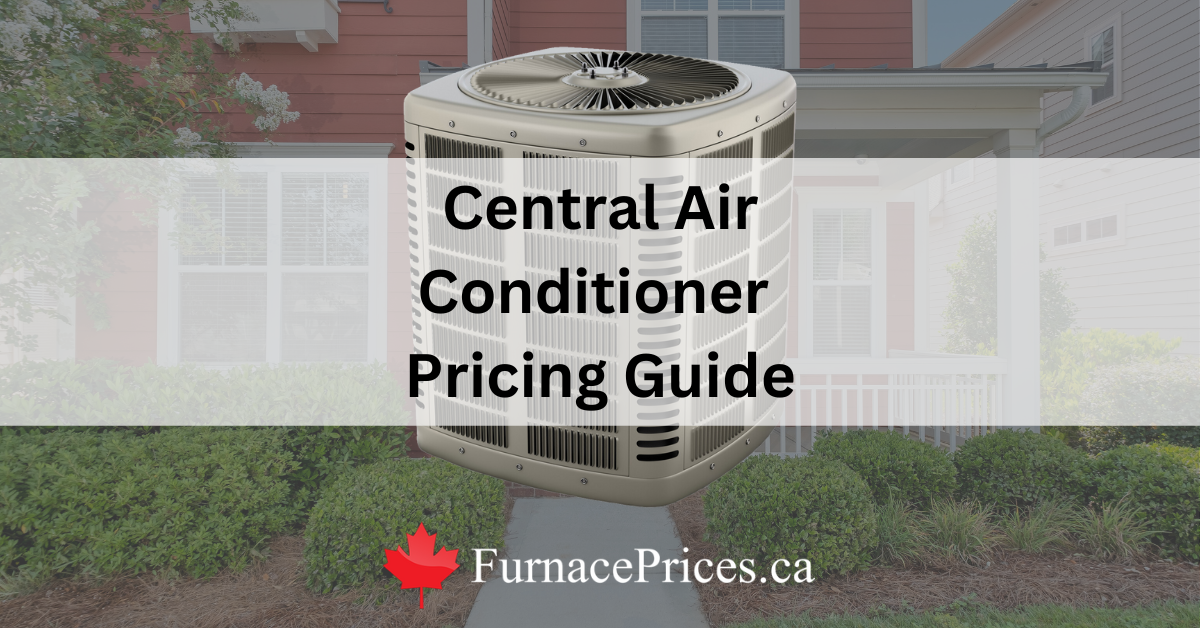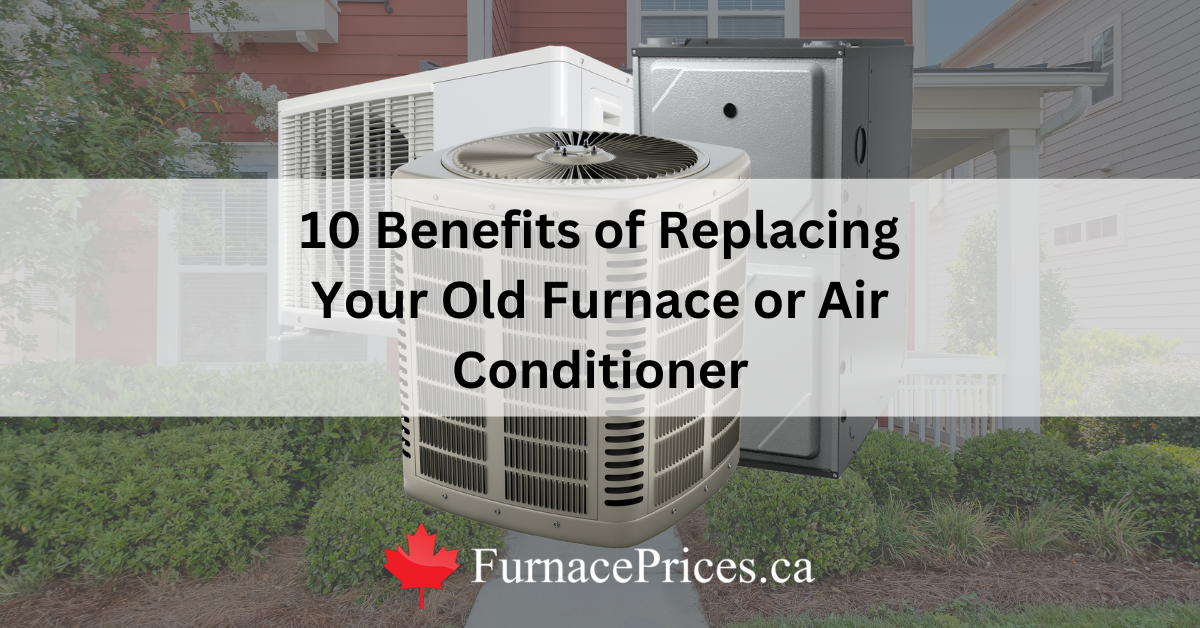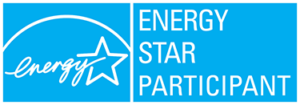Installing a new air conditioner isn’t cheap. Given the substantial AC installation cost, it’s natural for homeowners to be concerned about potential overspending. You don’t want to get hit with surprise charges or pay more than you need to.
In this article, we’ll break down what actually drives the cost of an AC installation. We will also share what you can control and where you might be able to save a bit.
And if you’re wondering what it might cost in your case, don’t guess. We’ve got a free Air Conditioner Cost Calculator that gives you a ballpark based on your home and setup. It takes less than 2 minutes and helps you go into quotes with your eyes open.
1. The Number of Units Being Installed
Starting with the obvious—more units mean more money. You’re usually looking at somewhere between $4,500 and $5,500 for a single AC unit. That includes the unit itself (plus installation).
The number of units depends on the size of your house, how many floors you have, and how it’s laid out. If you replace old units, the price will usually be about the same, minus some labour or materials. You might save a bit if the ductwork and electrical are set up properly.
2. Type of Air Conditioner
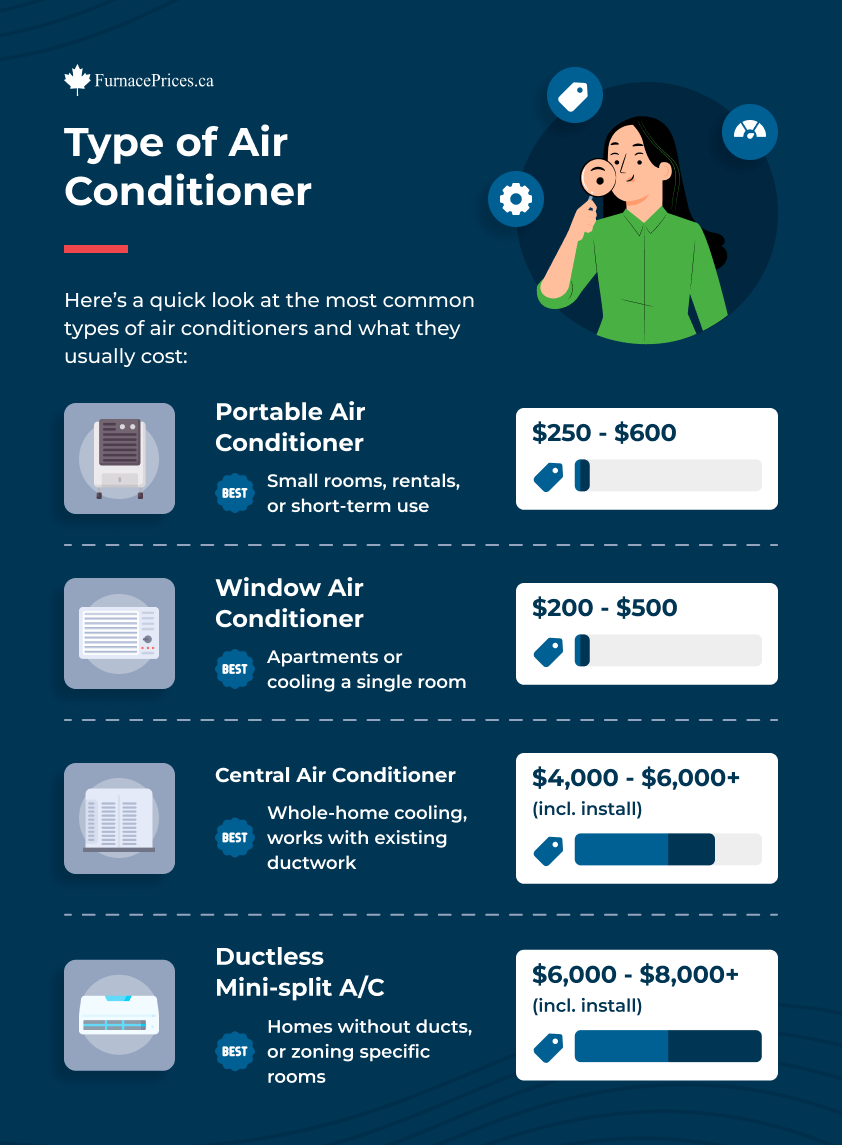
Here’s a quick look at the most common types of air conditioners and what they usually cost:
| Air Conditioner Type | Average Price Range | Best For |
|---|---|---|
| Portable Air Conditioner | $250 - $600 | Small rooms, rentals, or short-term use |
| Window Air Conditioner | $200 - $500 | Apartments or cooling a single room |
| Central Air Conditioner (incl. install) | $4,000 - $6,000+ | Whole-home cooling, works with existing ductwork |
| Ductless Mini-split A/C (incl. install) | $6,000 - $8,000+ | Homes without ducts, or zoning specific rooms |
3. Air Conditioner Size
When it comes to ACs, size isn’t about how big the unit looks—it’s about how much cooling power it has. A licensed HVAC tech will figure out the right tonnage based on things like:
- Square footage of your home
- Insulation quality
- Ceiling height
- Number of windows and how much sun your home gets
Here’s a rough idea of how size affects price:
| Tonnes | Minimum Average Price (Including Installation) |
|---|---|
| 1.5 Ton | $3,750 – $4,750+ |
| 2 Ton | $4,000 – $5,000+ |
| 2.5 Ton | $4,250 – $5,500+ |
| 3 Ton | $4,500 – $6,000+ |
| 3.5 Ton | $4,750 – $6,500+ |
| 4 Ton | $5,000 – $7,500+ |
| 5 Ton | $6,000 – $8,500+ |
You can also use our Free Air Conditioner Size Calculator.
4. AC SEER Rating
SEER stands for Seasonal Energy Efficiency Ratio. It measures how efficiently an air conditioner cools your home over a season. The higher the SEER rating, the more energy-efficient the system—and the more you could save on your electricity bill over time.
Central AC systems with a SEER of 14.5 or higher can earn the ENERGY STAR® certification.
| A/C Efficiency Rating (SEER) | Average Price Range (Installed) |
|---|---|
| 18 SEER and up | $5,500 - $8,000+ |
| 16 - 17 SEER | $4,500 - $6,000+ |
| 13 - 15 SEER | $3,750 - $5,500+ |
Most homes in Canada do just fine with something in the 13–17 range. If you’re in a spot with long, hot summers or just tired of sky-high utility bills, a higher SEER might be worth the investment.
5. Zones & Controls
Zoning allows you to control your home’s temperature in different areas (or “zones”) independently. Installing a zoned system adds to your upfront cost, but it gives you better control and can help save energy over time
You may not need full zoning unless you live in a large multi-storey home or have empty areas for long periods.
Use smart thermostats to help automate your zones and reduce energy use. They cost more upfront but can prevent the need for extra zoning by learning your habits.
| Number of Zones | New Construction | Existing Home Retrofit |
|---|---|---|
| 2-zone system | $1,400 – $2,000 | $1,800 – $3,000 |
| 3-zone system | $1,600 – $2,200 | $2,000 – $3,500 |
| 4-zone system | $1,800 – $2,800 | $2,400 – $4,800 |
| Per additional zone | $200 – $380 | $300 – $450 |
For more information, check out our guide on HVAC zoning systems.
6. Ductwork, Vents, & Returns

If you’re installing central air for the first time or if your existing ducts are old, leaky, or undersized, you may need new ductwork, vents, and return air pathways. This can add a big chunk to your total cost. Ductwork installation costs between $4 and $10 per square foot.
A lot of existing duct systems can be reused with some minor adjustments. Sealing and insulating may be enough instead of replacing everything.
7. The Complexity of The Installation
Several factors add to the complexity. It takes more time and effort if the unit needs to be installed in a tight or hard-to-reach spot like an attic or crawl space. If the electrical panel needs upgrading to support the new AC, that adds cost.
A professional installer will usually assess all these factors before giving a quote.
8. If Any Electrical Upgrades Are Required
Here are some common electrical upgrades that may be required:
- Breaker panel upgrades
- Dedicated circuits
- Wiring or disconnect switches
- GFCI protection
The average hourly rate for licensed electricians in Canada ranges from $65 to $130, depending on your location and the complexity of the work. In larger cities like Toronto, Vancouver, or Ottawa, rates tend to be at the higher end.
9. Cooling Load is a Major Factor
The cooling load refers to how much cooling your home actually needs. In other words, how much heat builds up in your home throughout the day and how much the air conditioner needs to remove to keep things comfortable.
Here are a few things that can increase your cooling load unnecessarily:
- Poor or missing insulation
- Single-pane or leaky windows
- Skylights without proper shading
- West-facing windows with no curtains or blinds
- Heat-producing electronics or appliances running often
- Air leaks around doors and windows
10. Removal of Old System
The removal cost is often included in the total installation price when replacing an old AC unit with a new one. If your old system uses outdated refrigerants like R-22, special handling and disposal may be required, possibly increasing costs slightly.
11. Accessibility of Installation Area
In rare cases, installation can get tricky if the old system is in a hard-to-reach spot—like under a deck, crawl space, or suspended in the air on wall brackets. You could pay more if extra steps are needed to take it out safely.
12. Brand Matters
Here’s a quick breakdown of the popular AC brands in Canada:
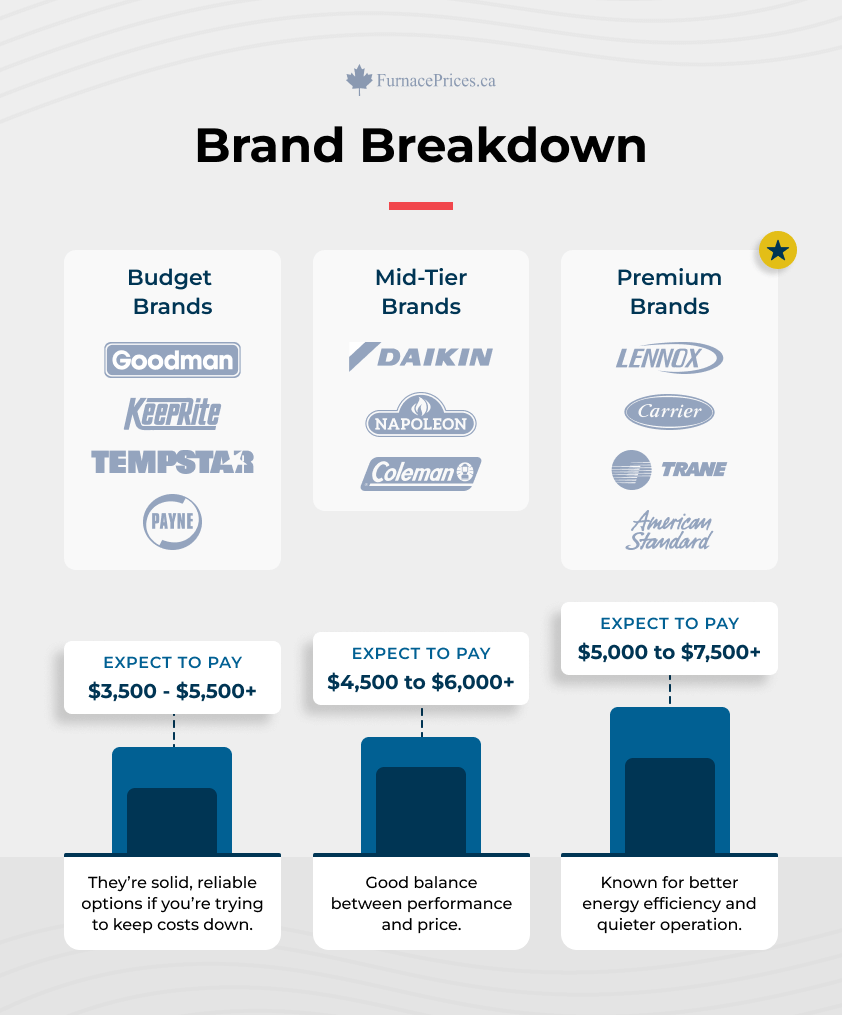
- Budget Brands: Goodman, Keeprite, Tempstar, and Payne usually cost between $3,500 and $5,500+. They’re solid, reliable options if you’re trying to keep costs down.
- Mid-Tier Brands: Daikin, Napoleon, and Coleman fall in the middle, usually $4500 to $6,000+. Good balance between performance and price.
- Premium Brands: Lennox, Carrier, Trane, and American Standard are top-shelf. Expect to pay $5,000 to $7,500+. These are known for better energy efficiency and quieter operation.
For a detailed breakdown of costs by brand, visit Air Conditioner Prices & Installation Costs in Canada.
Some brands are imported from the U.S., and with the recent tariff talk floating around, those prices might go up.
13. Home Insulation & Energy Efficiency
Air sealing and insulation upgrades typically range from $1,000 to $6,000, depending on your home’s size, the materials used, and how complex the work is. While that may sound like an added expense, improving insulation before installing a new AC can actually reduce your overall cooling needs
According to research, wrapping a home with a radiant barrier—a reflective insulation—can lower the required AC size by 10% to 20%.
14. Permits & Local Regulations
In most cases, adding or replacing an air conditioning system doesn’t require a permit—as long as the work doesn’t affect the structure of your home.
But if you’re not moving walls, cutting into major framing, or doing large-scale electrical upgrades, you’ll likely need to pay for a permit (about $200 to $250).
15. Labor

Labour is a major part of your air conditioner installation cost. For starters, the installation, which includes both labour and standard materials, usually ranges from $750 to $1,500. Several factors affect labour costs:
- System Complexity
- Accessibility
- Installer Experience
In Toronto, Vancouver, and Calgary, you can expect to pay on the higher end due to demand and cost of living. In mid-sized cities like London, Halifax, or Regina, rates are typically more moderate.
Need help getting a fair quote? We connect you with trusted local contractors and make sure you’re getting competitive pricing. Get a free quote from your area’s top-rated pros—no obligation.
Frequently Asked Questions
What time of year is best to install an air conditioner?
Early spring and fall are ideal for air conditioner installation in Canada. HVAC contractors are less busy, and you may get better pricing compared to the summer rush.
Can I install a central AC unit myself to save money?
It’s not recommended that you install an AC unit yourself. Central AC systems require licensed HVAC, electrical work, and refrigerant handling. DIY installation could void the warranty or lead to code violations.
What are the criteria for the installation of an AC unit?
Key criteria for AC installation include:
1. Correct unit size based on a cooling load calculation
2. Proper ductwork for venting
3. Electrical compatibility
4. Outdoor space for the condenser
5. Meeting local codes and permit requirements
Get Quotes
How soon are you looking to buy?*

